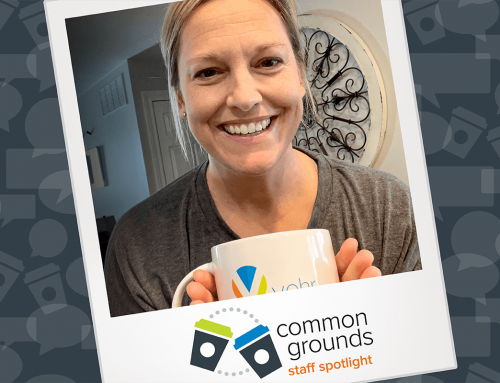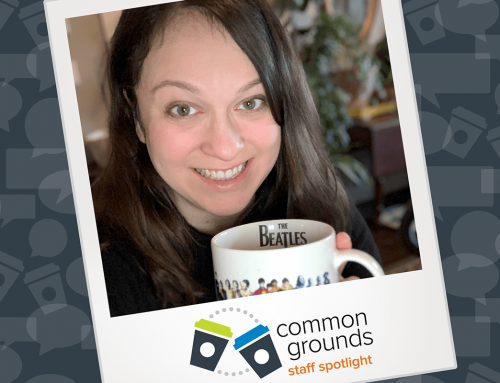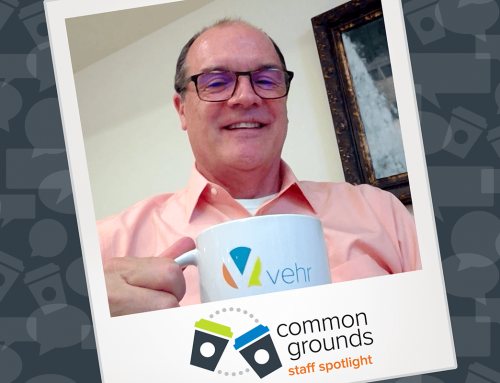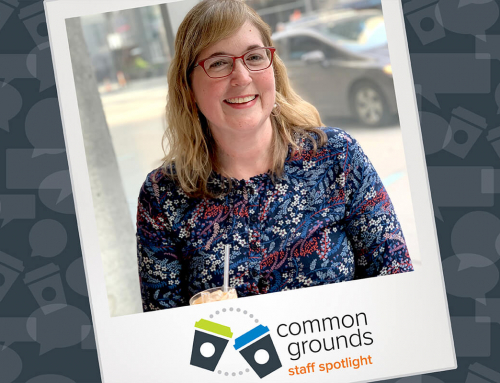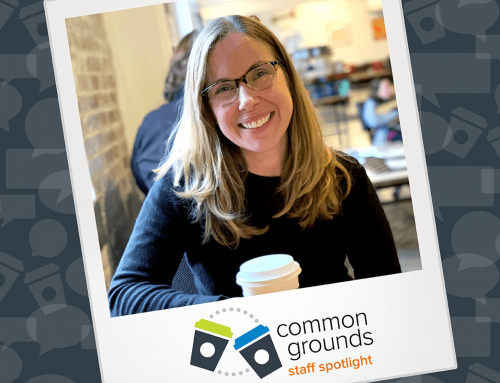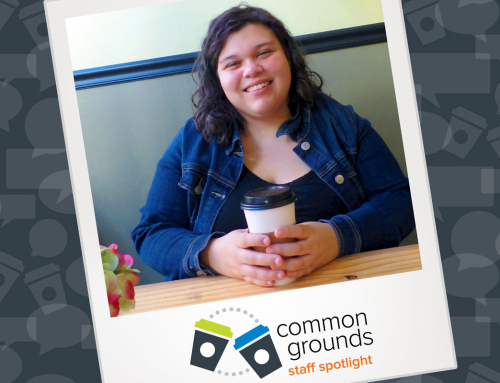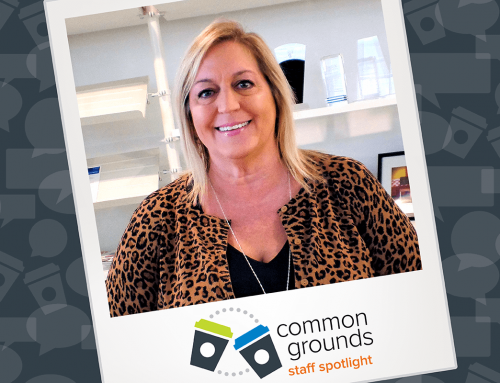The arrival of fall brings beautiful colors, holiday decorations and the return of pumpkin flavored…everything. It also serves as a great time to rekindle your relationship with your local coffee shop or favorite bag of coffee grounds. It was in that spirit that I sat down with Vehr’s newly appointed digital marketing specialist, Samantha Graham, to discuss her background in design, the importance of a digital presence amid the pandemic and the guilty pleasures of a Pumpkin Spice Latte.
Thanks for meeting with me Sam, and congratulations on your new role of digital marketing specialist! Can you tell me a little bit about what your new position entails?
Thanks, Max! My new position is focused on leading the digital strategies of our clients — everything from audits to Search Engine Optimization (SEO) and Pay Per Click (PPC) to social media advertising, reporting and copywriting … and everything in between.
You started your career as a designer, right? Can you tell me a little bit about how this transition into a digital marketing role happened for you?
I did. This transition is kind of a natural evolution — I’ve been doing digital work for clients for the past couple of years and I’m also a member of Vehr’s Digital Acceleration Team. It’s also a return to my roots, so to speak. My degree is in web design so I’ve always had a soft spot for our digital projects.
How does your background in design benefit you when working on digital projects?
Almost every digital project has a creative component. In today’s digital landscape, it’s more crucial than ever to capture an audience’s short attention span with eye-catching visuals and copy. Even if I’m not the one designing visuals for a campaign, insights from my years as a designer help to gauge whether something is on-brand, is compelling enough to gain clicks and is following all of the technical rules of various platforms.
For what type of clients is leveraging digital marketing most necessary?
It’s really a vital part of any client program of work. Digital is less expensive than traditional marketing and can reach an incredibly targeted audience in a measurable way. There are an endless supply of tools and methods to customize strategies for various business objectives every step of the way.
There certainly are a ton of tools and methods to choose from, but that can get a little bit overwhelming if you’re just starting out. What do you recommend to businesses who want to modernize their approach but frankly don’t know how or where to begin?
The best place to begin is with research — thorough audits of website, social media and any other digital efforts to assess strengths and needs, and to create benchmarks to measure against in the future. By figuring out what’s working and what’s not, you can move forward with an informed strategy to grow your audience and brand loyalty in a cost-effective way while making adjustments according to real-time data.
What to you signifies a successful digital marketing strategy?
All digital marketing strategies look a little different according to the client’s business objectives, so they can’t all be measured the same. Some metrics are pretty vain — likes, followers, impressions, etc. — but they’re still good indicators that your strategy is on track. The most successful digital marketing strategies identify the important metrics at the very beginning.
How have you seen COVID-19 fast track trends in digital marketing and design? What advice do you have to marketers who aren’t sure if their business is keeping up?
We’re all spending more time at home looking at screens and less time going out, so basically, it’s prime time for advertisers to reach their target audiences.
These days, brands must be agile, alert and able to adapt to changes constantly to keep up in the digital space. You can work hard to rank first for a particular keyword on Google only to have your competitor take your spot within days thanks to tools that let them track your rankings, ever-changing algorithms and consumer behavior. That’s just one example.
Nothing in your digital footprint — social media, website, email marketing, PPC, SEO — should have a “set it and forget it” strategy. Automation is great and there are a ton of powerful tools out there to save time, but it’s most valuable if you spend that extra time on thorough and constant evaluation of your digital efforts and making adjustments as necessary.
Thanks, Sam. Before wrapping up I have to ask, what’s your coffee of choice today?
No shame in saying that this time of year, it’s a Pumpkin Spice Latte with half the pumps and no whip. Because who can honestly drink that much sugar?!
I can, Sam, and I’m not proud of it.


